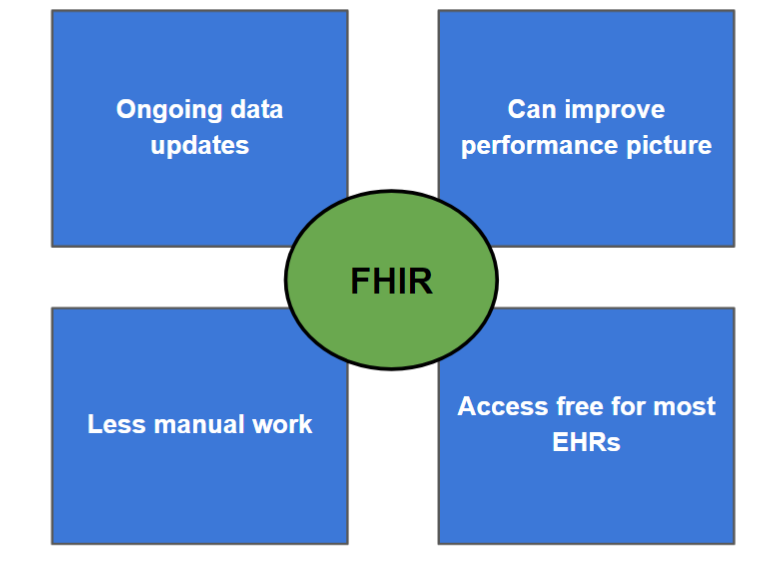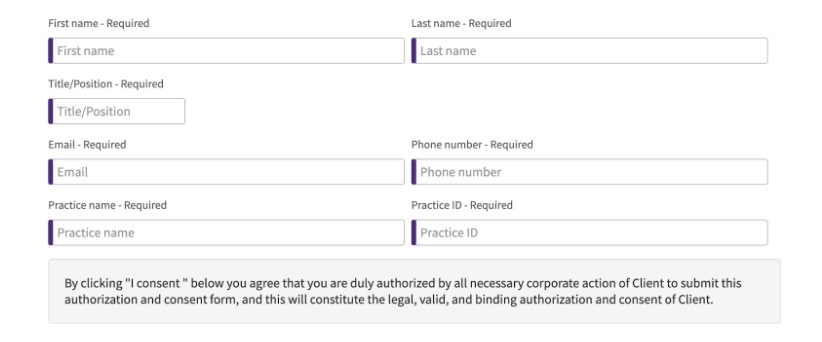
The U.S. healthcare system has long struggled with establishing an efficient and effective process for storing and sharing patients’ medical information, but the adoption of the Fast Healthcare Interoperability Resources standard, known as FHIR, is now paving the way for transformative change in this area. FHIR is not only a solution for the seamless exchange of health information but also can alleviate the burden on providers who need to adhere to various quality data reporting mandates. In this article, we'll explain what FHIR is, how it can ease quality data reporting compliance in programs like the Merit-based Payment Incentive System (MIPS) and the Alternative Payment Model Performance Pathway (APP), and what healthcare providers can do today to connect with FHIR.
What is FHIR?
FHIR (pronounced "fire") is a standard for the exchange of electronic health records (EHRs). Developed by Health Level Seven International (HL7), an authority on health data interchange standards, FHIR is designed to improve the flexibility, adaptability, and efficiency of healthcare information systems.
Currently, various healthcare providers store patients' health information in multiple locations, making it challenging to combine and share data across different systems. The FHIR standard simplifies this process by using internet-based methods to improve communication between different EHR systems. This approach enables seamless information sharing, similar to how programs interact with websites—requesting and receiving data effortlessly. FHIR utilizes web technologies called Application Programming Interfaces (APIs), enabling both patients and doctors to access and exchange health data from any location.
How Does FHIR Support Quality Data Measurement and Reporting?
FHIR will eventually replace current standards for electronic quality data capture and reporting for programs like the traditional Merit-based Incentive Payment System (MIPS) and the Alternative Payment Model Performance Pathway (APP). The Centers for Medicare and Medicaid Services has proposed to transition to Digital Quality Measures (dQMs) for quality reporting using FHIR in future years and has ongoing activities underway to align CMS electronic Clinical Quality Measures (eCQMS) with the FHIR standard and support quality measurement via APIs.
Healthcare providers, including Medicare Shared Savings Program Accountable Care Organizations (ACOs), are already realizing the benefits of using FHIR to simplify their quality data collection and reporting efforts. FHIR allows for continuous data updates which reduces the manual work involved in creating or generating EHR reports. It provides access to a robust data set which enhances the overall performance view for healthcare professionals. Most EHRs support FHIR access without additional charges.
MDinteractive has extensive experience interfacing with EHRs using FHIR, allowing us to update quality data at frequent intervals.

What are the Different Types of FHIR Access?
There are two different types of FHIR access: patient-level access and bulk access.
Patient-Level Access
This type of access focuses on individual patients. It allows for specific queries related to a single patient's data, similar to how one would access his or her own medical records online.
Bulk-Level Access
This approach is designed for accessing large sets of data, often for an entire patient population. Instead of querying individual patient records, bulk access retrieves vast amounts of data at one time.
Is Your EHR FHIR Ready?
Federal regulations require that all certified EHRs support the standard FHIR APIs by the end of 2022. This means any healthcare provider with a certified EHR that meets the 2015 Edition Cures Update certification will have FHIR technology. The Office of the National Coordinator for Health Information Technology (ONC) Certified Health IT Product List (CHPL) will show FHIR readiness with the entry shown in the image below.

How to Connect with FHIR
Activating FHIR in your EHR is an easy process. Most EHRs require brief information to authorize access as shown in the example below.

Get Connected!
Healthcare providers can take actional steps now to connect with FHIR. MDinteractive's firsthand experience highlights the transformative potential of FHIR in streamlining quality data reporting for programs like MIPS and the APP, making it an essential tool for an interconnected and data-driven healthcare future.
Leave a comment